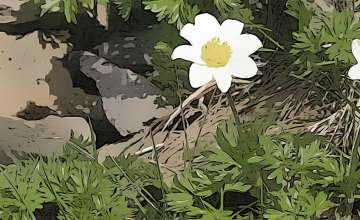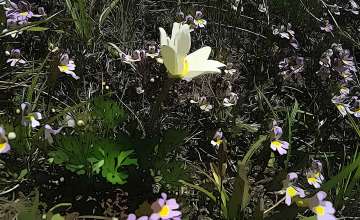Monte Baldo | Botanical Garden of Europe
Description
The Monte Baldo, also called "Hortus Europae" (Garden of Europe) represents the ideal ecosystem for an exceptionally high diversity of plants and animals.
The Monte Baldo consists of different zones ranging from a typical alpine area at 2,200 m to a sub-Mediterranean area at the bottom of Lake Garda.
For this reason, the mountain chain is unique in Europe and has been explored by botanists since the 16th century. On the slopes of Monte Baldo there are 43% of the entire alpine flora, half of all species of Italian orchids (over 60) and 40% of known butterfly species (2085). Some plant species can be found only here, which is why they have the name "Baldense". Examples are the Anemone baldensis, the Galium baldensis and the Knautia baldensis.
The climate is strongly influenced by Lake Garda, which provides for an exceptional Mediterranean ambience with olive groves, holm oaks, phillyrea, laurel plants, butcher's-broom, terebinths and cypresses (Mediterranean plant introduced by the Etruscan population) at the foot of the mountain. The orientation towards southeast has also been contributing significantly to the creation of the perfect temperature and level of humiditation for these species. In addition, the variety of the flora is also due to the fact that the top of Monte Baldo had been excluded from the last ice age, which ended about 10,000 years ago and thus some preglacial species could survive by adapting to the new environmental conditions.
The rich spontaneous flora is also distinguished by the great variety of medicinal plants and herbs, which have been sought by the scholars for the preparation of remedies and medicines since the sixteenth century. Francesco Calzolari (1522-1609) and Giovanni Pona (1565-1630) from Verona were among the first to deepen these aspects.
It was Giovanni Battista Olivi, a doctor from Cremona to call Monte Baldo "Hortus Italiae", later extended to "Hortus Europae" thanks to botanical experts from Europe who were impressed by the richness of the plant scenery.
To show the true uniqueness of this environment, one just needs to know that in 2004 some researchers at the Rovereto Civic Museum discovered a naturally occurring and endemic plant, which is in no way related to any other existing species: the Guenthera Repanda, a cabbage-like crucifer that has been included among the new endemic species of the world by one of the most influential botanical institutes, the Willdenowia of Berlin.
The Guenthera with the Kerner ranunculus and the Gypsophila papillosa are the only three plants in the world that grow exclusively on the Monte Baldo.
Related content
-

Flora and Fauna of Monte Baldo
As far as vegetation is concerned, the area surrounding Monte Baldo is probably the most beautiful; not without good reason the picturesque mountain is known as the "garden of Europe". -

Botanical Garden Monte Baldo
The botanical garden is located inside the science and nature park of Novezzina and comprises an area of about 20,000 square metres
Weather Forecast

Today
Nubi sparse
7 - 15 °C

Tomorrow
Pioggia leggera
8 - 16 °C
100 %

21/04/2024
Pioggia leggera
8 - 13 °C
100 %

22/04/2024
Pioggia leggera
7 - 13 °C
100 %



